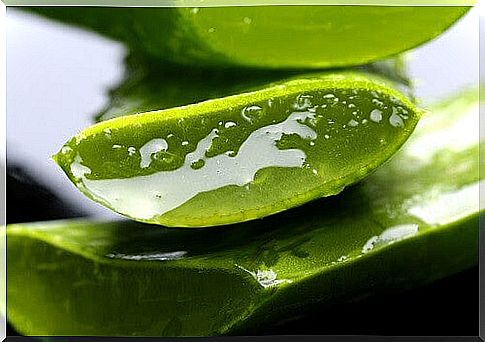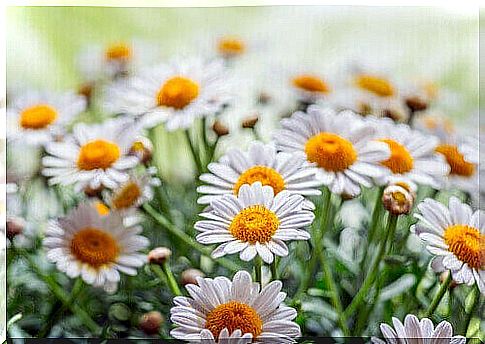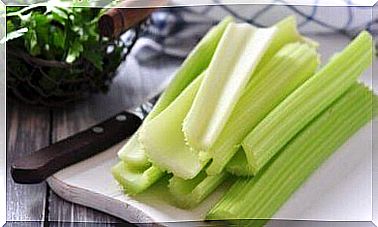5 Medicinal Plants That Can Be Grown At Home

A small herb garden can be easily planted in even a small home. Many medicinal plants thrive at room temperature and do not need outdoor space. All you need are a few small pots of herbs or flowers and a bright corner in the home – not forgetting regular watering.
For example, aloe vera, mint, and chamomile are popular medicinal plants for many ailments and health improvements, and they also grow easily at home. The plant care is therapeutic, brings color and relaxation to the home, cleans the room air and is a nice pastime for both adults and children. Enjoy Mother Nature’s own herbs in the privacy of your own home.
Medicinal plants that can also be grown at home
Wouldn’t it be wonderful to own a small cluster of medicinal plants from which you can snap as needed for help? Nature’s own medicine cabinet provides help for many small ailments, such as stomach disease, flu, skin problems and nervousness. By using natural ingredients, you avoid disgusting side effects, and you can be sure that you are treating the ailments of children in particular with safe methods.
Houseplants can be found in many homes, as their relaxing effect is known – a small green oasis provides strangely energy, especially in the middle of winter and hustle and bustle. Many plants are more than just pleasing to the eye. We will now take a closer look at medicinal plants that can be easily grown at home in traditional flower pots.
Healthy plants
1. Aloe Vera

Aloe Vera does not need much attention or pampering. It is one of the easiest medicinal plants. Plant aloe Vera in a flowerpot and place it in a place where it gets plenty of daylight. The kitchen window or balcony is a great place to grow.
Aloe Vera should be watered infrequently. Aloe can grow large and succulent as it is an energetic plant. The gel-like fruit flesh contained in its dense leaves contains water, enzymes and amino acids, which e.g. soothe and rejuvenate the skin. Aloe vera is often used, for example, on sun-burned skin, as it soothes burnt skin quickly.
Aloe vera is used by clicking the leaf off and scraping the gel from inside the leaf. When choosing a pot, keep in mind that aloe feels better in a clay pot than in a plastic one. Fill the pot with base soil containing 50% moss. A few layers of pebbles should be spread right on the bottom of the pot to make it easier to filter the water. Aloe needs a lot of direct sunlight and doesn’t thrive in the cold, so if you grow it on a balcony in the summer, be sure to move it indoors for the winter.
2. Mint

Mint tea is a familiar treat for many, but have you ever considered that you could make fresh mint in mint as well? Mint tea is a great help for stomach aches, diarrhea and flatulence as it soothes the symptomatic stomach quickly.
Mint is easy to combine with other medicinal plants in various tea drinks and extracts. Mint grows easily in a flowerpot at home and can be added to desserts, drinks or, for example, Moroccan-influenced meals. Fresh mint is suitable for e.g. as a friend of chocolate ice cream and strawberries, as a side dish to mojitos or as a freshener for yoghurt sauce.
Mint can be planted at any time of the year and does not require much maintenance. Mint repels bees and other bugs with its strong scent, so there is no need to fear pests. Find a clay pot in your hands, pile the pebbles into the bottom layer and fill with soil. Mint is best suited for a place that is bright but not in direct sunlight.
3. Salvia

The healing power of sage has been believed for millennia, and the name sage is originally derived from the Latin verb salvare , ‘to heal’. Sage is native to the Mediterranean region, but today it has spread to many other regions. Sage is often used in cooking, especially in meat and fish dishes, and the taste of sage is at its best in spring, when the leaves have not yet had time to turn rough.
Sage should be grown in clayey soil or soil, and effective drainage should be provided. Sage needs a lot of sunlight, so it works best on the balcony, in the herb garden in the backyard, or on the bright window sill. Sage has a relaxing effect that facilitates digestion, reduces inflammation and can even help with headaches. Plant your own sage today!
4. Parsley

Parsley is familiar to many, both dried and fresh, and its medicinal effect should not always be considered. Parsley tastes great in many different dishes, and it goes well with salads, soups and even simply on top of bread.
In addition to the great taste, parsley is a great remover of toxins and waste products. Parsley cleanses the kidneys, repels foul breath, protects the immune system from bacteria and other pathogens, and contains a large amount of iron to top it all off. Parsley can be eaten every day, and if you want to take advantage of its health effects, you should enjoy it with a teaspoon a day.
You’ve probably seen parsley sold in grocery stores ready in pots. It is easy to grow. Parsley needs five hours of sunlight every day, after which it should be moved to a shadier place. You will need a small pot with a particle of mold, curd moss and a layer of stone on the bottom.
Unfortunately, parsley is slow to grow, so if you grow it from seed, be sure to water it regularly, even if nothing seems to be happening in the pot. Believe it or not, properly cared for, the parsley will slowly but surely push itself up from the soil – sometimes it can take up to a couple of months for the parsley to grow to its full size, so the grower is required to have patience.
Home-grown parsley has a lot more flavor than store-bought ones, and you’ll soon find you add it to every serving. Cut out the leaves according to use and use them almost anywhere. Parsley is an irresistible herb!
5. Chamomile

Chamomile is often consumed in the form of tea as it relaxes and soothes both the mind and the body. Chamomile is especially suitable for enjoyment in the evening, as it facilitates sleep, reduces nervousness and regulates cardiovascular function. If you suffer from restlessness or anxiety in the evenings, chamomile is a great help for this – drink a cup of chamomile tea and soon you will find that you sleep better and more deeply at night. Also, be sure to remove distractions such as a telephone, computer, and TV from the bedroom and near the bed.
Wouldn’t it be wonderful to grow your own chamomile plant that you can use whenever you want? Fortunately, growing chamomile is easy. Chamomile should be planted in the summer, just when the weather is at its hottest. You need dark succulent mold as well as sand to make it easier for water to filter. Chamomile should not be exposed to direct sunlight, but should be stored in a bright place.
Chamomile is used for inflorescence parts, so exercise a little patience while waiting for the flowers. Snap the inflorescences for your use only after all the petals have opened, do not use the flowers in the bud stage. Cut off the inflorescences with a scissor, never pull them off, as you may accidentally tear off the whole flower with all its roots.
Grow medicinal plants at home with the whole family and enjoy their health benefits all year round. You save money and best of all: you can quickly treat a surprising flu or a small patient with a stomach illness without leaving home.









